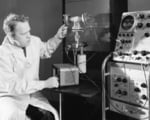![The BigRep ONE large-format 3D printer [Source: BigRep]](https://fabbaloo.com/wp-content/uploads/2020/05/image-asset_img_5eb065becda71.jpg)
The BigRep ONE large-format 3D printer [Source: BigRep]
Berlin-based BigRep shipped their 500th 3D printer, showing the incredible value of large-format 3D printing.
BigRep 500th Customer
The customer receiving the 500th BigRep device turned out to be JADAMDE GERMANY, a manufacturer of e-mobility devices, such as an underwater scooter that I’d like to check out. Apparently their products can be made from up to 75% 3D printed parts.
In this case the parts are not prototypes; they are production parts being installed in end-use products. That’s quite a difference from the early days of 3D printing, and it demonstrates the validity of BigRep’s vision of large-format 3D printing.
Large-Format 3D Printing History
While large-format 3D printing is becoming relatively commonplace these days, there was a time when it was not so. Back in 2014 when BigRep launched there were only two types of 3D printers: extraordinarily expensive commercial devices from the long-time manufacturers, and inexpensive (and unreliable) desktop devices.
![The original BigRep 3D printer [Source: Fabbaloo]](https://fabbaloo.com/wp-content/uploads/2020/05/image-asset_img_5eb065bf20977.jpg)
The original BigRep 3D printer [Source: Fabbaloo]
BigRep was one of the first to try an experiment: what if the desktop 3D printing technology could be scaled up into a large format? Would customers be interested in that capability? Would they use it for prototyping or even production?
There was some doubt about the viability of large-format 3D printing at the time.
Concerns were raised over whether the large models would warp due to the gigantic part dimensions. Some worried about the choice of materials, as PLA was almost exclusively used to mitigate the warping effects. Others were fussed about the massively long print durations for large prints, which sometimes took literally weeks to complete.
There was no guarantee that large-format 3D printing would succeed.
![BigRep founder, the late René Gurka, showing off some huge filament spools [Source: Fabbaloo]](https://fabbaloo.com/wp-content/uploads/2020/05/rene-gurka-with-spools_img_5eb065bf61488.jpg)
BigRep founder, the late René Gurka, showing off some huge filament spools [Source: Fabbaloo]
But BigRep’s founder, the late René Gurka, had a vision for what could be. One by one these and other concerns were resolved.
Warping was solved by adjusting the chemistry of the materials and providing enclosed solutions. Print speed was increased by re-engineering extrusion systems. And many other challenges were gradually overcome.
Large-Format 3D Printing Applications
BigRep discovered a profitable market niche for large-format 3D printing by approaching manufacturers of large parts.
The idea was to enable these manufacturers to produce inexpensive prototypes instead of expensive traditional metal or polymer processing. One example we saw a few years ago was a marine propeller manufacturer, who could then quickly produce a 3D printed propeller design for initial testing.
![3D printed bathtub made by BigRep [Source: Fabbaloo]](https://fabbaloo.com/wp-content/uploads/2020/05/image-asset_img_5eb065bf86730.jpg)
3D printed bathtub made by BigRep [Source: Fabbaloo]
Another example of this type was for bathtub manufacturers. These companies could produce a 3D printed bathtub design and display it at trade shows without having to do any tooling up for proper manufacturing. If the new design was well-received at the show, they proceeded to manufacture it. Otherwise, no big expense was incurred.
Production Large-Format 3D Printing
More recently BigRep has been tweaking their machine and software designs to allow for true production.
New engineering materials and high-quality output have provided a path for manufacturers to use BigRep’s equipment not only for prototyping but for actual end-use parts, as apparently JAMADE GERMANY is doing with the 500th machine.
BigRep Revenue
One more thing: the 500th machine from BigRep allows us to speculate on their company revenue.
The typical retail price of a BigRep device has been around the US$40K mark. Thus, if we multiply this out we find that BigRep has likely made some US$20M on machines alone. However, each machine sold more than likely also consumes considerable amounts of material also purchased from BigRep.
BigRep is doing quite well, it seems.
Via BigRep

